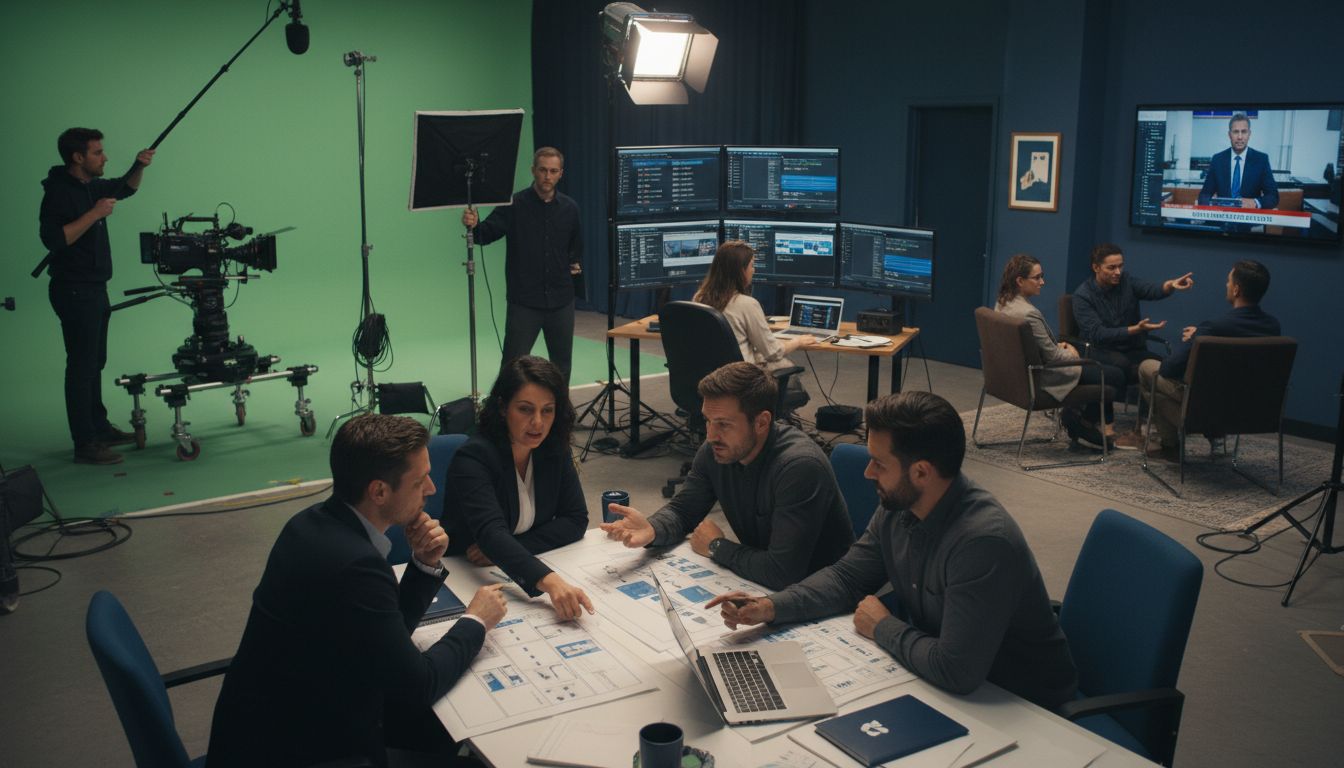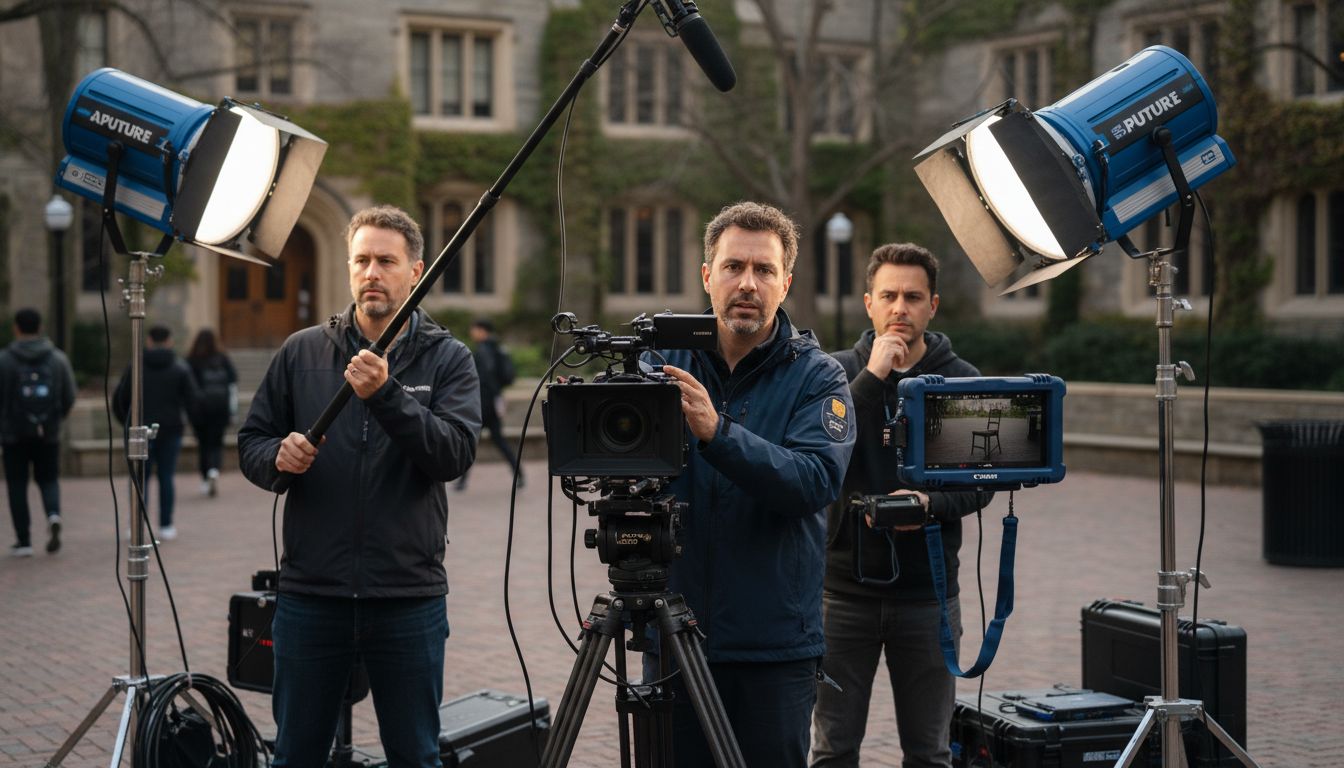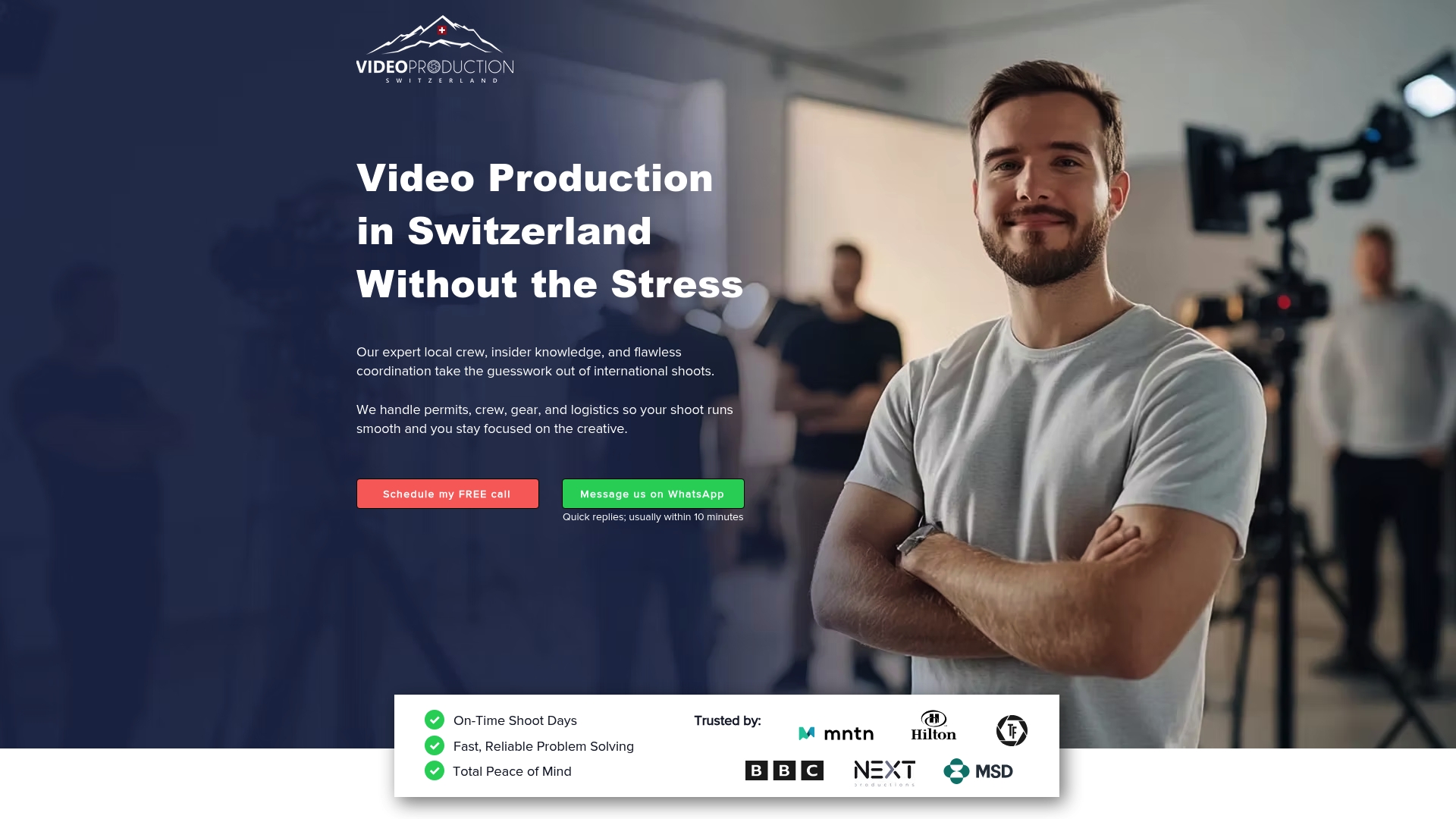Video Development: Everything You Need to Know
- info1419758
- 3 days ago
- 6 min read

More than 80 percent of internet traffic now comes from video content. This surge shows how critical effective video development has become for sharing messages, teaching audiences, and building brands. Whether you work in business, education, or activism, understanding the process behind high-impact video matters. In the sections that follow, you will learn how thoughtful planning, creative expertise, and technical know-how turn ideas into compelling visual stories that truly connect.
Table of Contents
Key Takeaways
Point | Details |
Purpose of Video Development | Video development serves to create engaging narratives that educate, inspire, and connect with audiences across platforms. |
Diverse Project Types | Various video project types, such as corporate videos and educational content, require specialized skills and approaches for effective communication. |
Production Workflow Stages | Successful video production involves meticulous planning across pre-production, production, and post-production stages, each building on the last. |
Legal and Logistical Considerations | Understanding legal requirements, including permissions and contracts, is critical in ensuring the success and integrity of a video project. |
Defining Video Development and Its Purpose
Video development represents a strategic creative process of transforming conceptual ideas into visual storytelling experiences that communicate, educate, and engage audiences across multiple platforms. At its core, video development involves more than just recording footage it encompasses a comprehensive approach to crafting meaningful narratives that resonate with viewers.
The purpose of video development extends far beyond simple documentation. Participatory video approaches demonstrate how powerful visual storytelling can become a transformative tool for communication. Communities can leverage video to explore critical issues, voice concerns, and communicate complex narratives that might otherwise remain unheard. This methodology empowers groups to take action, solve problems, and present their perspectives with authenticity and impact.
Within professional contexts, video development serves multiple critical functions:
Storytelling: Creating compelling narratives that connect emotionally with audiences
Communication: Translating complex concepts into digestible visual experiences
Brand Representation: Establishing organizational identity through strategic visual messaging
Educational Tool: Facilitating learning through dynamic, engaging visual content
Understanding the nuanced approaches to video development requires recognizing its multifaceted nature. Understanding the Digital Video Workflow Process can provide deeper insights into the technical and creative dimensions of this complex discipline. Professional video development integrates technical proficiency with creative vision, ensuring that each project not only looks professional but communicates its intended message with precision and emotional resonance.
Major Types of Video Development Projects
Video development encompasses a diverse range of project types, each designed to serve unique communication and creative objectives. From educational content to entertainment, these projects require specialized approaches and technical skills that transform raw concepts into compelling visual narratives.
University of Saint Mary highlights several fascinating video project categories that demonstrate the breadth of this field. Video presentations allow creators to demonstrate knowledge through visual storytelling, while whiteboard animations enable complex ideas to be explained through dynamic drawing techniques. Screencast videos capture computer screen activities with narration, making them ideal for tutorials and technical demonstrations. Greenscreen videos provide immersive presentation capabilities by allowing creators to place subjects in virtually any background, and 360-degree videos offer unprecedented immersive experiences like virtual tours.
Beyond traditional formats, specialized video development projects emerge in professional and creative domains:
Corporate Videos: Communicating brand messaging and organizational narratives
Documentary Films: Exploring real-world stories and social issues
Marketing Content: Creating persuasive visual advertisements
Live Performance Visualization: VJing techniques that blend visual media during live events
Training and Educational Videos: Developing instructional content for skill transfer
Understanding the Corporate Video Production Process can provide deeper insights into how professional teams approach these diverse project types. Each video development project requires a nuanced understanding of storytelling techniques, technical capabilities, and audience engagement strategies, ensuring that the final product not only looks professional but effectively communicates its intended message.

Essential Workflow and Production Stages
Video production represents a complex, multistage process that transforms creative concepts into compelling visual narratives. Each stage demands precise coordination, technical expertise, and strategic planning to ensure the final product meets creative and technical standards.
ArXiv research highlights innovative approaches to streamlining video production, particularly in the critical pre-production planning phase. The ‘propose-simulate-discriminate’ methodology demonstrates how advanced systems can assist creators by generating and ranking potential storyboards, simulating character animations, and optimizing camera movements before actual shooting begins. This approach revolutionizes traditional workflow by introducing computational intelligence into the creative planning process.
The typical video development workflow encompasses several interconnected stages:
Pre-Production
Concept development
Script writing
Storyboarding
Location scouting
Talent casting
Budget planning
Production
Principal photography
Live recording
Performance capture
On-location shooting
Post-Production
Video editing
Sound design
Color grading
Visual effects
Final render and export
Complete Guide to Video Production Workflow provides deeper insights into navigating these complex stages. Professional video development requires not just technical skills, but also the ability to manage creative vision, technical constraints, and collaborative dynamics across multiple production phases. Each stage builds upon the previous one, creating a seamless narrative journey from initial concept to final deliverable.
Legal and Logistical Requirements in Video Production
Video production involves far more than creative vision and technical skills. Legal and logistical considerations form a critical infrastructure that can make or break a successful project, requiring meticulous planning and comprehensive understanding of regulatory landscapes.
Centro de Capacitación Cinematográfica emphasizes the importance of comprehensive education in navigating the complex legal frameworks surrounding film and audiovisual production. Professional video development demands intricate knowledge of multiple legal domains that protect both creators and subjects.
Key legal and logistical requirements include:
Location Permissions
Obtaining proper filming permits
Securing location release agreements
Negotiating site access and usage rights
Talent and Performance Agreements
Drafting comprehensive talent contracts
Defining usage rights and compensation
Managing model release documentation
Intellectual Property Considerations
Copyright clearances
Music and soundtrack licensing
Image and brand usage permissions
Insurance and Liability
Production insurance coverage
Equipment protection
Accident and injury liability management
How to Get Filming Permits: A Step-by-Step Guide for Crews offers additional insights into navigating these complex requirements. Successful video production hinges not just on creative excellence, but on a robust understanding of legal frameworks that protect all stakeholders involved in the creative process.

Common Mistakes and How to Avoid Them
Video development is an intricate process fraught with potential pitfalls that can derail even the most promising projects. Recognizing and proactively addressing these common mistakes can mean the difference between a forgettable production and a memorable visual narrative.
MTEI Learning emphasizes the critical importance of reflective analysis in video production, highlighting how misinterpreting content or failing to engage in constructive critique can significantly undermine a project’s effectiveness. This insight underscores the need for a strategic, thoughtful approach to video development.
Common mistakes in video production typically fall into several key categories:
Technical Errors
Poor audio quality
Inconsistent lighting
Shaky camera work
Inadequate equipment preparation
Creative Missteps
Weak narrative structure
Lack of clear storytelling focus
Misaligned visual and emotional messaging
Overcomplicating the narrative
Logistical Challenges
Insufficient pre-production planning
Budget mismanagement
Unrealistic time scheduling
Poor team communication
Strategic Avoidance Tactics
Conduct thorough pre-production meetings
Create comprehensive production checklists
Invest in quality equipment and skilled personnel
Build contingency time into project timelines
Understanding Video Production and Post Production Essentials provides additional insights into navigating these challenges. Successful video development demands not just technical skill, but a holistic understanding of potential pitfalls and strategic approaches to mitigating them.
Take Your Video Development to the Next Level with Expert Support
Creating compelling videos is a complex journey that demands not only creativity but expert management of logistics, legalities, and technical challenges. If you want to avoid common pitfalls such as permit delays, equipment issues, or crew coordination problems highlighted in the article, partnering with a reliable local specialist can make all the difference. At Video Production Switzerland, we bring over 20 years of experience to ensure your video development project flows smoothly from pre-production to post-production, letting you focus on storytelling and engagement.

Ready to eliminate stress and unlock seamless video production in Switzerland Start with a free consultation to discuss your unique project needs and access trusted local crews, gear, filming permits, and location scouting. Explore our Complete Guide to Video Production Workflow to see how we align expert technical execution with powerful narratives. Don’t let legal or logistical challenges hold your project back Visit https://videoproductionswitzerland.com now and transform your vision into a professional video reality.
Frequently Asked Questions
What is video development?
Video development is the creative process of transforming ideas into visual storytelling experiences that effectively communicate, educate, and engage audiences across various platforms.
What are the main types of video production projects?
The main types of video production projects include corporate videos, documentary films, marketing content, training and educational videos, whiteboard animations, and screencast videos among others, each catering to unique objectives.
What are the essential stages of the video production workflow?
The essential stages of the video production workflow include pre-production (concept development, script writing, storyboarding), production (principal photography, live recording), and post-production (video editing, sound design, visual effects).
What common mistakes should be avoided in video production?
Common mistakes in video production include poor audio quality, weak narrative structure, insufficient pre-production planning, and budget mismanagement. It’s important to conduct thorough planning and utilize quality equipment to avoid these pitfalls.
Recommended

Comments